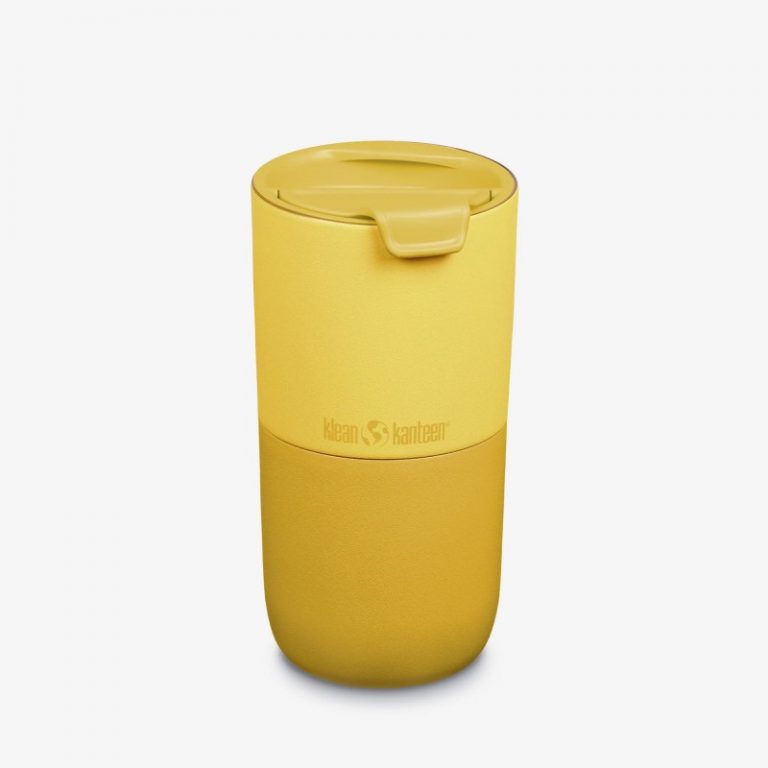
Natural swimming pools and ponds offer a fresh way to enjoy water in your garden without relying on chemicals. These eco-friendly pools use plants and natural filtration to keep the water clean, creating a healthier environment for swimmers and wildlife. Unlike traditional pools, they blend beautifully with the surrounding landscape, adding a tranquil, natural feel to your outdoor space.
Interest in natural pools has grown as more people look for sustainable choices that work with nature, not against it. Building one means investing in a low-maintenance, chemical-free alternative that looks stunning all year round. This guide will walk you through what you need to know to create your own natural swimming pool or pond, step by step.
If you have enough land, a few gardening and green building skills and a plan, it may be worth considering for keen swimmers to indulge in a natural swimming pool.
Obviously not for everyone, but these are free from chlorine (one of the most toxic substances known to man) and let nature filter the water, along with a bit of easy upkeep.
Also read the post on greener swimming costumes.
Natural swimming pools or ponds rely on plants, gravel and filtration zones, to keep the water clean. Most have a swimming zone and a regeneration zone, where plants filter the water. They blend beautifully into gardens, and look more like natural ponds.
Have sloping sides to avoid drowning hazards for wildlife. Learn how to make your garden safe for pets, to know toxic plants to avoid (blue-green algae is very toxic to pets).
Although dogs can swim, they can still get cramp (talk to your vet about suitable lifejackets).
Avoid netting on ponds, this can trap birds and wildlife. To keep wildlife safe near pools, use FrogLog (a ladder to let small critters escape) and Critter Skimmer (rescues trapped creatures – get both as they do different things). How many you need, depends on pool size.
Planning and Design Considerations
Before you start digging, the planning and design phase lays the foundation for a natural swimming pool that fits your garden and will thrive for years. Taking the time to study your space and understand the practical needs can save hassle later, and it sets the tone for creating a pool that feels like it belongs. Here’s how to approach the key points during this stage.
Assessing Your Garden Space
Start by looking closely at your garden’s existing conditions. Soil type plays a big role in how well the pool holds water and supports plants. Sandy or gravelly soils drain quickly, which can make retaining water harder, while clay soils hold water well but might need attention to avoid poor drainage and stagnation.
It’s also important to observe how water moves across your site. Check for low spots where water pools naturally or for areas prone to flooding after rain. A spot with good drainage is ideal but you can adapt your design if needed.
Take note of any trees, shrubs or plants already there. Some roots can interfere with the pool’s structure, while mature plants can shade parts of the water, affecting plant growth and temperature. You want to strike a balance between preserving natural features and creating enough open space for sunlight.
Finally, think about how your pool could affect nearby areas. Will water runoff from the pool flow into neighbours’ gardens? Could there be an impact on local wildlife? Understanding these factors early helps avoid surprises.
Designing the Pool Layout
Your natural pool should feel like a seamless part of your garden while working well for swimming and cleaning. Plan a clear swimming zone that’s deep and large enough, usually at least 2m deep and wide enough to move comfortably. Around this, design planting zones where aquatic plants and biofilters will grow.
These planting zones often sit on shallow shelves or terraces under the water. They are key to natural filtration, filtering nutrients and keeping water clear without chemicals. These shelves should be positioned so plants get plenty of light but don’t block swimmers.
When putting together the layout, think about easy access. Steps or gently sloping edges make entering and exiting safer and more comfortable. Consider where you’ll put the pump and any mechanical equipment that helps circulate water; these should be discreet but reachable for maintenance.
Legal and Environmental Permissions
Every garden is different and local rules vary. Before starting, contact your local council or planning authority to find out if you need permission. Some areas require planning consent for excavations or new water features beyond a certain size.
You may also need to check on any restrictions about water use, especially if you live in a region with water shortages or strict environmental controls. Some councils ask for environmental impact assessments if the pool might affect protected species or habitats nearby.
It’s best to gather this information at the start. Being aware of local regulations helps avoid fines or delays and lets you plan with confidence.
Construction Process and Materials
Building a natural swimming pool involves a series of practical steps from digging the shape to setting up the plants that keep the water clean. It’s not just about creating a water feature; it’s about creating a living ecosystem that works with nature. Let’s break down what happens during construction and what materials you’ll need to achieve a beautiful, long-lasting pool.
Excavation and Base Preparation
Excavation is the first hands-on step, where the design on paper turns into real shapes in the ground. You’ll dig the pool to the right depth, typically around 2 metres in the swimming area. Natural pools usually have separate zones: a deep swimming section and shallower regeneration zones where plants will grow. These shallow zones often have terraces or shelves built into the pool’s perimeter.
It’s important the base is smooth and stable, or the liner might settle unevenly or get damaged. After excavation:
- Remove stones and roots that could puncture the liner.
- Level the bottom as much as possible.
- Add a protective layer like a geotextile fabric to shield the liner.
- Create gentle slopes, especially on the terraces, for easy planting and maintenance.
Careful preparation here makes all later steps easier, and it helps avoid leaks or problems with settling over time.
Choosing the Liner or Natural Sealing Methods
A key part of keeping your pool full is choosing how you’ll seal it to hold water. You have a few options, each with its strengths.
- Flexible Liners: Made of materials like EPDM rubber or PVC, these liners are easy to install and flexible, adapting well to the shape of your pool. They’re durable and resistant to UV light but need protection to avoid punctures during installation or from sharp stones.
- Bentonite Clay Layers: This natural clay swells when water touches it, creating a waterproof barrier. It’s eco-friendly and blends well with natural designs, but needs a thick and well-compacted layer to work effectively. It may also require a base liner beneath in some cases.
- Concrete Sealing: Using concrete combined with special waterproof sealers provides a hard, solid shell. It lets you shape the pool precisely, but concrete can heat up quickly in the sun and may need maintenance to avoid cracks over time.
Choosing the right sealing method depends on your budget, the soil conditions, and how natural you want the pool to feel. Liners offer flexibility and fewer cracks, while clay and concrete provide a more solid base but need careful installation.
Installing Natural Filtration Systems
The key to a natural pool is its filtration system, which keeps water clean without chemicals. This system relies on plants, beneficial microbes, and water movement.
The regeneration zone is where you plant wetland species like reeds, rushes, and water lilies. These plants absorb nutrients that would otherwise encourage algae growth. To support their growth, this zone typically has gravel and sand beds that act as a home for helpful bacteria. These bacteria break down waste and filter the water biologically.
A circulation pump plays a big role here. It moves water from the swimming area through the filter beds and plants, then back into the pool. This continuous movement prevents stagnation and helps oxygenate the water.
Setting this up correctly means:
- Positioning the pump for good flow but hiding it discreetly.
- Using gravel layers of different sizes to maximise filtration.
- Selecting a variety of wetland plants with deep roots to anchor the filter medium and absorb impurities.
Together, these elements form a balanced, natural cleaning system that keeps your pool swimmable and fresh.
Adding Finishing Touches
Once the pool itself is ready, it’s time to focus on the surroundings to create a comfortable and inviting space.
- Landscaping: Use native plants and stones around the edge to integrate the pool into your garden. This also helps prevent soil erosion and supports local wildlife. Plant choices can provide shade or sun depending on your needs.
- Seating Areas: Add benches, stone ledges, or wooden decks for relaxation. Placing seats near the water encourages socialising and enjoying the natural atmosphere.
- Lighting: Soft, warm lights around the pool make it usable in the evening and improve safety. Solar-powered options can keep things eco-friendly and simple.
- Safe Entry: Gentle steps or sloping edges allow swimmers to enter and exit the pool easily. Using natural stone or timber for steps adds to the organic feel.
These finishing touches not only improve the look and function but make sure your natural swimming pool feels welcoming every time you step outside.
Maintaining Swimming Pools
Once your natural swimming pool or pond is up and running, keeping it healthy requires regular care that fits with its natural cycle. The balance between plants, water, and wildlife depends on thoughtful maintenance. Staying on top of plant health, water levels, and cleanliness ensures your pool remains clear, safe, and inviting all year. Here’s how to manage the seasonal changes, control algae naturally, and keep the equipment working smoothly.
Seasonal Plant Care and Water Management
Aquatic plants do most of the hard work in your natural pool, filtering water and creating habitat. They need attention that changes with the seasons to keep them thriving.
- Spring and Summer: This is when plants grow most actively. Trim back dead stalks and old leaves to encourage fresh growth and avoid overcrowding. Check planting shelves for silt or debris that might smother roots, and clear away if needed.
- Autumn: As growth slows, remove any dying plants to stop decay in the water. Clear fallen leaves regularly to prevent them from sinking and rotting, which can cloud the water.
- Winter: Some aquatic plants die back naturally. Leave the stems to protect underwater life, but remove any thick mats that might block oxygen flow. In colder climates, avoid disturbing the bottom to preserve hibernating creatures.
Water levels fluctuate throughout the year due to rainfall and evaporation. Keep an eye on the pool’s surface height:
- After heavy rain, excess water may need to be drained to avoid overflow or flooding low garden spots.
- During hot, dry spells, topping up with clean water is necessary to maintain balance and protect plant roots.
- A dip in water level can expose roots and reduce pump efficiency, so topping up is essential.
Having a simple gauge or marker on the pool edge helps you track water levels easily. Aim to keep levels stable without rushing to add water daily; patience aids natural settling.
Natural Algae Control Techniques
Algae can appear simply because of sunlight and nutrients. The key to preventing overgrowth is maintaining biological balance and keeping algae in check without harsh chemicals.
- Enhance Plant Competition: Healthy, vigorous aquatic plants absorb nutrients algae would use. Boost plant diversity in your regeneration zones and prune regularly to support strong growth.
- Promote Water Movement: Algae thrive in still water. Keep pumps running to create gentle circulation that discourages algae mats from forming.
- Introduce Beneficial Microbes: Bacteria in the filter beds break down organic waste, reducing nutrients algae feed on. Keeping your biological filter healthy is essential.
- Mechanical Cleaning: Regularly remove algae clumps by hand or use a fine net for surface scrubbing. This stops algae settling and spreading seeds.
- Shade Sensitive Areas: Use floating plants or strategically placed taller vegetation to reduce the intensity of sunlight that encourages algae growth.
Together, these methods keep algae manageable while preserving the natural pool’s eco-friendly appeal.
Equipment Maintenance
Your pump and filter form the heart of water circulation and cleaning in a natural pool. Regular upkeep keeps them working efficiently.
- Pump Care: Check the pump weekly during the swimming season. Remove any trapped leaves or debris in the intake to maintain good water flow. Inspect for unusual noises or drops in pressure that might signal blockages or wear.
- Filter Maintenance: Clean your filter media seasonally to prevent clogging. For gravel or sand filters, gently rinse the material in a bucket of clean water (never tap water with chlorine) to avoid killing helpful bacteria.
- Check Pipes and Hoses: Look for leaks, cracks, or blockages in your circulation system. Replace worn parts promptly to avoid sudden equipment failure.
- Winter Preparation: In colder climates, drain the pump and pipes or use antifreeze products safe for ponds. Store equipment indoors to protect against frost damage.
- Power Supply: Test cables, switches, and timers annually to prevent electrical hazards and ensure automatic systems keep running smoothly.
Proper maintenance reduces the need for repairs and prolongs the life of your equipment, ensuring your natural swimming pool remains a healthy, clean retreat.
Help to Build a Natural Swimming Pool
Building Natural Ponds is the main how-to book. There are many companies that offer good advice and services:
Conclusion
Building a natural swimming pool or pond lets you enjoy clean, chemical-free water while enhancing your garden’s beauty and supporting local wildlife. It offers a sustainable alternative that uses natural processes to keep water clear and fresh, making it easier to maintain over time.
By choosing this eco-friendly option, you create a peaceful outdoor space that benefits both you and the environment.
Taking care of your natural pool with regular plant management, algae control, and equipment maintenance helps it stay healthy year-round. Consider this approach if you want a water feature that blends quietly with nature and provides lasting enjoyment. Your garden becomes more inviting, with a pool that feels part of the wider ecosystem instead of working against it.






